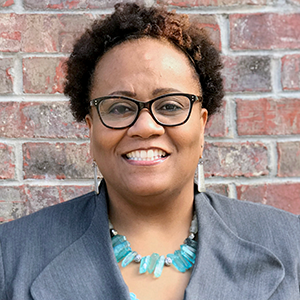 How Does Change Happen?
How Does Change Happen?
“People of color, particularly African Americans, feel the stigma more keenly. In a race-conscious society, some don’t want to be perceived as having yet another deficit.” ~author, Bebe Moore Campbell.
How does change happen? How do those who feel unseen get noticed and why does it always seem like it takes something tragic to be heard, particularly for those of us who represent communities of color? In 2008, a year after I joined the Hogg Foundation as a program officer and following the death of Black author, journalist and mental health advocate Bebe Moore Campbell, the U.S. House of Representatives deemed July the “Bebe Moore Campbell National Minority Mental Health Awareness Month, in her honor.
I had been working in the mental health space for more than 20 years. I recall the sadness I felt following the loss of Ms. Moore Campbell and then feeling hopeful that her life’s journey and struggle would call attention to the unique challenges, trauma, and unspoken pain of people of color. Yet today, fifteen years later, research shows only 1/3 of Black people in need of mental health interventions receive the support needed.
Roll tape to today, a time when countless tragic events involving people of color and a global pandemic shed light on the trauma, inequities and disparities people of color have experienced for generations. We’ve moved into a time when “courageous conversations” have entered many different facets of life and people want to talk about racism and the impact it has on everyone, not just people of color. Finding solutions and strategies for healing has become “the thing”. How does change happen in this new race-conscious world?
More than Courage
For the record, as a person of color, it takes more than courage to keep going. People of color have spent years talking (in spaces where we feel safe) about the pain we experience daily, long before it was popular to do so. We don’t label the conversations as being “courageous” and the focus has been not on improving our mental health, but sitting in a space where we can breathe and discuss our trials with someone who understands the journey. It starts with a “How you doing?” in barber shops and beauty salons, churches and among friends. The conversations are not facilitated or led by a mental health professional, yet these spaces are therapeutic, sacred, and healing.
As difficult as the last couple of years have been, I still hold on to that hope I felt when National Minority Mental Health Awareness Month was created. I remember thinking, finally, as a Black woman who has spent countless hours in meetings as “the Black spokesperson” doors are finally opening to more people like me, who can share their truths. I was excited that finally, there was recognition that one person could not speak for all Black or Brown people, and that we are not a monolith.
As so eloquently stated by Bebe Moore Campbell, “People of color, particularly African Americans, feel the stigma more keenly. In a race-conscious society, some don’t want to be perceived as having yet another deficit.” Solutions to addressing mental health and wellness in communities of color must focus on our strengths and include those things that help us stay resilient– our faith, family, friends, and community. Most of all, it must include the many voices who represent those we call “people of color.” We are very diverse, and it will take multiple voices to represent our unique needs and challenges.
Brave Spaces for All
Now, with 35 years and ten toes deep in this mental health workspace, I am hopeful and energized by several things. Our younger generation’s view of mental health is refreshing. They are talking about mental health and wellness in a different way. They are fighting so individuals do not have to feel shame, stigma or suffer in silence. They view mental health and wellness as a right and are demanding spaces where wellness and self-care are not the exception, but the rule. And more importantly, they are living life in a way that would resonate with Bebe Moore Campbell who said, “My color is my joy and not my burden.”
It is my prayer that we continue to create brave spaces where mental health is discussed openly and where all people are afforded access to quality, self-affirming care in a manner that respects their culture, upbringing, and unique needs. Before my work is done, I pray the divide between physical and mental health is erased and that people get the assistance they need to live, breathe, and thrive in spaces that bring them joy.
For the month of July, the Hogg Foundation is celebrating Minority Mental Health Awareness Month. We are highlighting stories that explore the efforts of diverse communities to improve community conditions that impact mental health, and what we all can do to make that happen.
Related Links
- Declaration of Racism as a Mental Health Crisis
- Hogg Foundation Awards 2023 Healthy Minds Grants for African American Mental Health, Well-being
- Into the Fold, Episode 149: Juneteenth and Mental Emancipation
- New Voices Showcase: A Compilation
- Racial Trauma and Resilience in African American Adults
- Into the Fold Episode 93: Healthy Minds – 20 Years of the African American Family Support Conferenc
- Mental Health and Faith Podcast Episode
- Minority Mental Health Awareness Month
